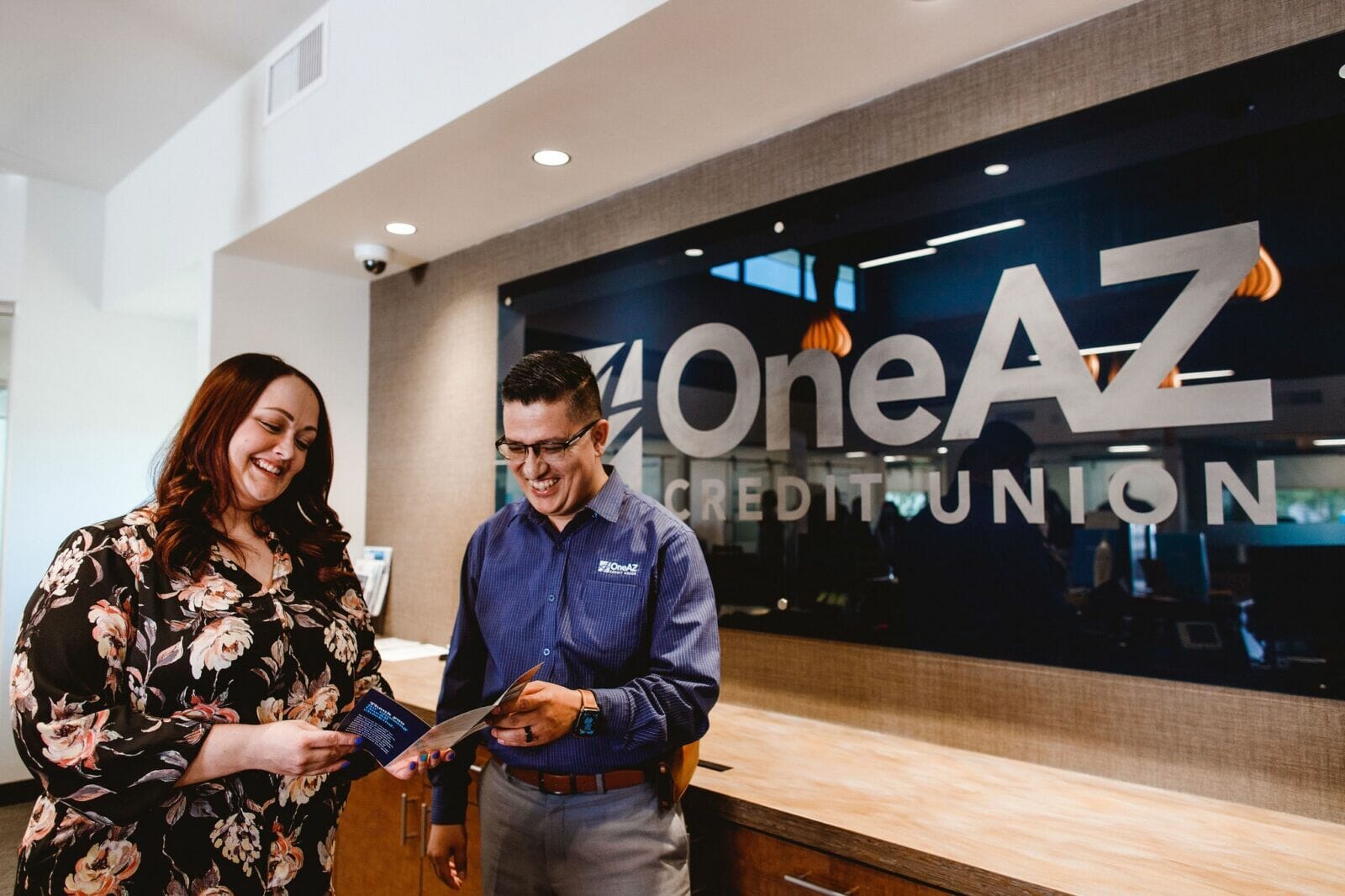On Dec. 6, 2021, the National Credit Union Administration (NCUA) reported that federally insured credit unions added 4.9 million members throughout the year, increasing total membership across the country to 128.6 million in the third quarter of 2021. Many individuals and businesses are choosing to bank with Arizona credit unions, and that trend is clearly represented throughout the state.
OneAZ Credit Union has experienced record-breaking membership growth of around 7% annually, according to CEO Kim Reedy. “Historically, we used to have around 10,000 to 12,000 new members joining us each year,” he explains. “In 2020, that number was the largest we’d ever had — 16,000 members. Then, last year, we were at 19,000 new members.”
READ ALSO: Here’s how OneAZ Credit Union has evolved over the last 70 years
Tyler Woodward, assistant vice president of strategy and product management at Desert Financial Credit Union, notes that the organization is serving more people than ever before. “At the start of 2020, we had just over 320,000 members. We ended 2021 with 390,000 members, meaning we’ve grown by just over 20% in the past two years.”
Credit unions are integral to the functioning of the economy in times of calm and calamity. Here’s why many Arizonans are opening accounts with these institutions, how they provided relief throughout the pandemic and what potential challenges lie ahead.
Unique institutions
For the uninitiated, the distinction between credit unions and traditional banks may seem murky, but there are important differentiators. Elisa Ross, vice president of marketing, sales and service at Hughes Federal Credit Union says that credit unions are unique in that they “are member-owned financial cooperatives in existence for the benefit of the member/owners.”



In other words, a credit union does not have stock that is traded on Wall Street like the big banks. Rather than paying dividends to stockholders, Reedy explains, “Our profits go right back to our members in the form of higher deposit rates, lower loan rates and more branches. We are nonprofit, and we give our returns to our membership and the community. That’s the fundamental philosophical difference between the banks and us. We want to improve lives. We don’t try to maximize stock price.”
A common misconception is that credit unions aren’t as sophisticated in their operations as big banks because of their organizational structure. Jason Paprocki, COO at Arizona Federal Credit Union, says, “That can be true on an exception basis, but in our case, we have a full suite of services for both consumers and small businesses. Deposit accounts, loans, insurance, investments — we can do anything that a big bank can, including the ability to connect with other credit unions and get our members access to over 30,000 ATMs nationwide, which provides the convenience level of a large national bank. You don’t have to give up anything to go to a credit union.”



Moreover, since the people who bank with a credit union are the owners, they reap the rewards of wise business decisions. Woodward notes that over the past five years, Desert Financial’s giveback bonus has returned $54 million to members.
Another advantage of banking with these types of institutions is how they benefit Arizona’s economy and focus on the community, according to Keysha Webb, vice president of remote delivery and innovation at Vantage West Credit Union.
“I don’t think people understand that their dollars stay locally. When people apply for a loan, that’s handled within our state,” she says. “We’re also proud of having local decision makers to help decide what rates we’re able to provide or what Arizonans are looking for when it comes to pandemic relief.”
A helping hand
While the economic recovery has progressed more smoothly than expected during the initial wave of the pandemic, there have been significant hardships borne by people and businesses alike. In response, credit unions in Arizona sought to alleviate stress where they could.
“At the beginning of the pandemic, we jumped into action,” says Jennifer Kimmell, senior vice president and chief marketing officer at TruWest Credit Union. “We provided a variety of options for our members based upon their needs, from skipping one or two payments to doing a complete loan modification.
“About 95% of our members who requested loan relief were able to resume payments as agreed on those loans,” she says. “We’re proud of that because it shows that we worked closely with members to help them make the right decision as they got on their feet and back to business as usual.”
Many credit unions had similar assistance available for their members, including mortgage forbearance, waived ATM fees and financial counseling. Businesses were also offered relief, primarily in the form of paycheck protection program (PPP) loans. Webb notes that Vantage West processed approximately $26 million in PPP loans to help keep local companies afloat and workers employed. Likewise, Desert Financial transacted over $100 million in PPP loans, according to Woodward.

Adds Paprocki, “I’ve been in this industry for 29 years, and this was the fastest any program came together. This was a unique scenario where we were learning about PPP loans as an institution at the same time as our members.”
To help alleviate the anxiety of people wanting to access PPP funds, Arizona Federal created a queue on its website where people could provide their contact information to hold a place in line as more information was released and applications became available.
“We we’re hopefully saying, ‘You’ve trusted us with your financial needs to this point. We’re learning as fast as we can, so trust us going forward and we’ll be there to help you out,’” Paprocki explains.
Root and branch for Arizona credit unions
The public health crisis caused by the coronavirus meant that most businesses shut down or reduced capacity as scientists raced to develop a COVID-19 vaccine. For credit union members, that meant their banking needs had to be met primarily through digital means.
As a result, mobile banking activity has skyrocketed since March 2020. Reedy reports that OneAZ saw an increase of 30%; Paprocki notes Arizona Federal had an initial jump of approximately 50%, which has since settled to about 15% above pre-pandemic levels; and Woodward says Desert Financial’s online banking system had twice the number of logins in December 2021 compared to January 2020.
Even if people were reluctant to use the internet to deposit a check or monitor their balance, many have since grown to appreciate its ease of use, including Woodward’s father. “My dad just didn’t trust it at first. But he was forced to use it and now that’s what he does all the time,” he explains. “It’s like any other technology, right? Once you start to use it, you realize the convenience and it becomes part of your habit.”
If members can do so much from the palm of their hands, what does that mean for the future of branches?
“Our data shows that 40% of our branch transaction volume hasn’t come back,” Kimmell says. “The volume hasn’t left, it just moved channels to online banking.”
Complicating matters further is the lack of qualified workers. “Labor is a real problem,” Kimmell continues. “TruWest recently decided to close some of our slower branches on Saturdays to keep our bigger branches open. We closed 50% of our Arizona and Texas branches last Saturday because we had to redeploy employees to other locations due to illness.
“Labor shortages have a longer-term effect than just keeping branches open on Saturdays,” Kimmell says. “Credit unions traditionally grow talent. They hire a teller and then 40 years later, that person might be your CEO. Stories like that run rampant throughout the credit union industry. I’m one of them.”
Still, many in the sector believe branches will continue operations, even if they become smaller and more focused on financial advice. During the early stages of the pandemic, Paprocki recalls conversations about branch banking being forever changed.
“But we realized that the branch is still here to stay, and we don’t have any plans to close any of them, because we think they’re still the destination for consultation and problem solving,” he says. “You still can’t replace sitting across from someone when you’ve got fraud on your account, or you’ve lost a card.”
Reedy adds that OneAZ is fully committed to its branch system, with plans to add approximately 10 new locations over the next 10 years.
“More people are seeing the advantage of being a member of a credit union and coming to us,” he concludes. “We’re here to help them improve their lives.”




